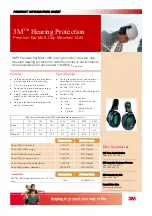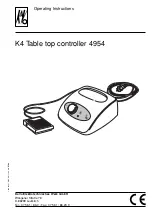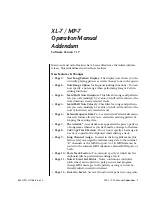
PROBLEM
PROBLEM
PROBLEM
CAUSE
CAUSE
CAUSE
SOLUTION
SOLUTION
SOLUTION
Loose reversing proximity
switch.
See
.
Loose piston packing bolt.
See
.
Pumps do not reverse direction
or pumps do not move.
Faulty directional valve.
See
.
Feed pump pressure is too low.
Adjust pressure to maintain 100
psi (0.7 MPa, 7 bar) minimum.
Pump cavitation.
Fluid is too thick. Consult
your material supplier for
recommended fluid temperature
to maintain a viscosity of 250 to
1500 centipoise.
Loose reversing proximity
switch.
See
.
Erratic pump movement.
Faulty directional valve.
Replace directional valve.
Obstructed fluid hose or gun;
fluid hose ID too small.
Open fluid hose to clear
obstruction, or use hose with
larger ID.
Worn piston valve or intake valve
in displacement pump.
See pump manual.
Pump output low.
Inadequate feed pump pressure. Check feed pump pressure and
adjust to 100 psi (0.7 MPa, 7
bar) minimum.
Fluid leak at pump rod seal.
Worn throat seals.
Replace. See pump manual.
Fluid leaking from pump outlet
rupture disk.
Check if heater and PRESSURE
RELIEF/SPRAY valve (SA or SB)
are plugged. Clear. Replace
rupture disk with a new one; do
not replace with a pipe plug.
No pressure on one side.
Inadequate feed pump pressure. Check feed pump pressure and
adjust to 100 psi (0.7 MPa, 7
bar) minimum.
NOTE:
NOTE:
NOTE: Table 1 is related to troubleshooting
problem, “Proportioning pump does not hold
pressure when stalled.”
Table
Table
Table 1
1
1 Determine
Determine
Determine Valve
Valve
Valve Leak
Leak
Leak Location
Location
Location
B-side pump piston
valve is dirty or
damaged.
B-side pump inlet
valve is dirty or
damaged.
A-side pump inlet
valve is dirty or
damaged.
A-side pump piston
valve is dirty or
damaged.
Pressure/Material
Pressure/Material
Pressure/Material Imbalance
Imbalance
Imbalance
To determine which component is out of
balance, check the color of some sprayed
material. Two-component materials are
usually a mix of light and dark fluids, so the
under-proportioned component can often be
readily determined.
When you have determined which component is
under-proportioned, spray off-target, focusing
on the pressure gauge for that component.
For example:
if component B is
under-proportioned, focus on the B-side
pressure gauge. If the B gauge reads
considerably higher than the A gauge, the
problem is at the gun. If the B gauge reads
considerably lower than the A gauge, the
problem is at the pump.
334946J
41
















































